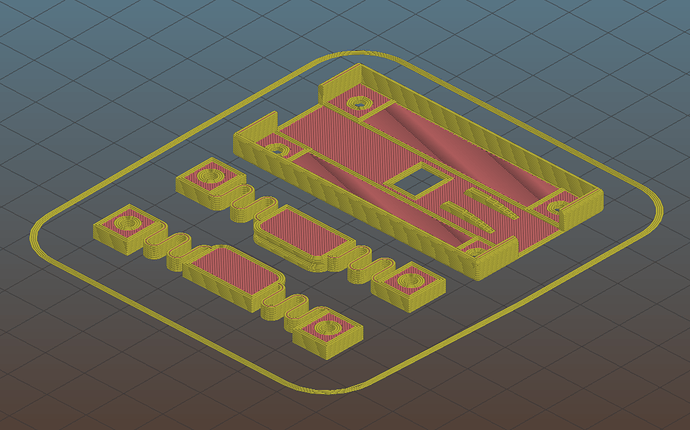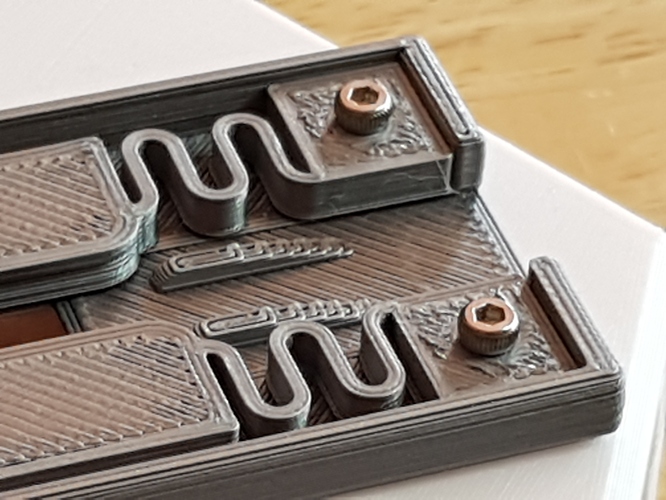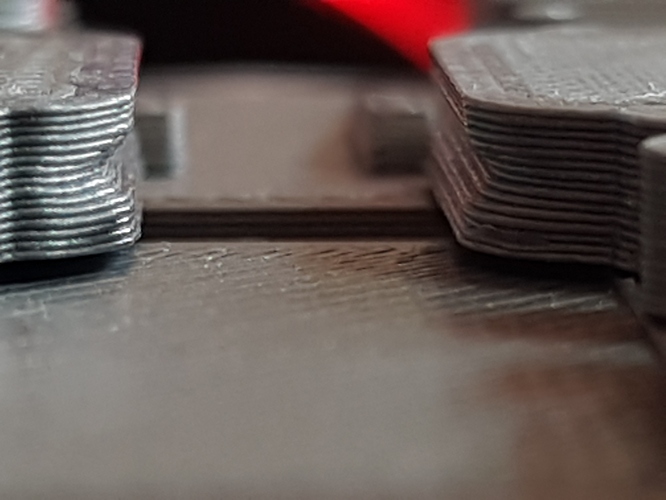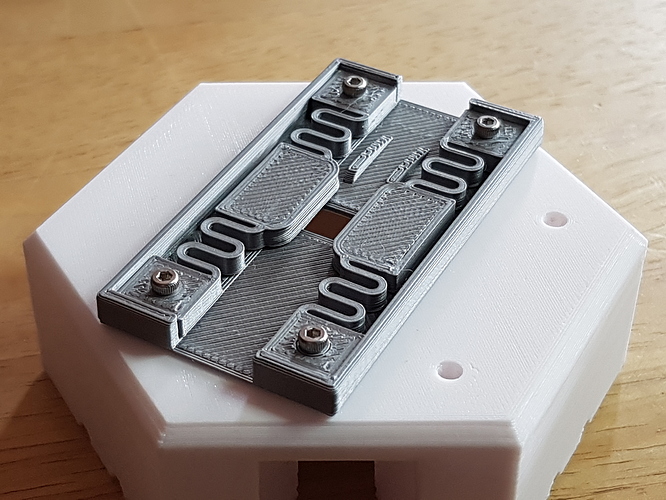You should be able to download the .stl-file from here:
3d-printable Super-8 gate by cpixip
This gate is designed to be printed on a low-quality 3D-printer, Anet A8 style. You need to use PLA as printing material and a layer height of 0.2 mm. Nozzle size should be the standard 0.4 mm size.
As you can see in the image above, you are going to print quite fine structures - so make sure that your print bed is leveled as best as possible. Do not use any rafts. Instead, print a one-layer skirt with enough loops to make sure you have a very even extrusion width for printing the model.
Standard infill is fine, as this will be used only on the v-groove bodies. Anything else will not see any infill.
Make sure that your slicer creates at least 3 perimeters. This is required for proper spring function and this is also the assumption which went into the v-groove geometry. Slow down printing of the first layer - otherwise, the 3D-printed springs might detach from the print surface.
Using a low-cost 3D printer with such fine structure has its challenges. For example, the ramps which guide the film into the v-grooves look coarse already in the slicer preview, but in reality
they are far away in shape from the original design. As they are used only during manual loading of the film, this is however of no concern. The springs are defined well by the printing, and that was the goal.
As you can see in the images, the gate hovers two layers, 0.4 mm, above the botton of the film channel. The position and movement of the v-grooves is only defined by the springs.
The gate itself, made out of two v-grooves, looks coarse,
but is sufficiently defined in shape to fixate the film in position. The v-groove geometry is starting 3 layers away from the print bed in order to smooth out remaining height variations of the print bed. The angled sides are not as smooth as I would like it, but it turned out that this is sufficient - this is probably due to the rather low friction coefficient of the PLA used.
I tried to print this with my printer at a lower layer height of 0.1 mm, but frankly, that was too much asking for my printer. If you have any success in printing with higher resolution, I would be very interested in receiving some feedback.
It will not be easy to remove the parts from the print surface. You need to be very careful, especially with the springs. A special build surface will tremendously help here.
The gate was designed to be mounted directly on an integrating sphere by four screws.
These screws also define the exact grip the v-grooves have on the film. So when tightening these screws, my standard procedure is to insert a small strip of Super-8 material into the gate and start fastening the screws. During that procedure, I make sure that the friction of the Super-8 stock comes out as low as I want it, while still having a firm grip on the film strip.
If anyone reprints this design, it would be great to share the results!



